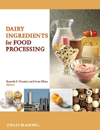Treat Your ‘Ticker’ Right This Month

In honor of February being American Heart Month, here are some steps you can take to keep your “ticker” healthy. Heart disease is the leading cause of death in the United States and, according to the Centers for Disease Control and Prevention, more than 27 million American adults live with it. This sobering fact is magnified when you consider that heart disease is largely a “lifestyle disease” that can be prevented through some very simple actions.
The top three changes are all lifestyle-focused. People must stop smoking, increase physical activity and eat a healthful diet. These changes can be a tall order, especially if you’re struggling with all of them. Therefore, this column primarily focuses on the dietary changes you can make to reduce the risk of heart disease. This is by no means meant to substitute for medical care, so talk with your physician or a registered dietitian to learn more.
One of the most popular heart-healthy diets is referred to as DASH (Dietary Approaches to Stop Hypertension). The plan is rich in fruits, vegetables, low-fat dairy, lean protein and grains. In numerous studies, the diet has been shown to lower blood pressure and improve cholesterol—two key factors for reducing the risk of heart disease. In fact, it was recently named by U.S. News & World Report’s panel of experts as the “Best Diet Overall,” because of its nutritional completeness and safety. Grains are a cornerstone of the regimen, and whole grain consumption is particularly encouraged because of its connection with disease prevention, although it does allow for a mix of whole and enriched grains. So, what exactly are whole grains? And what should you look for at the store?
Whole grains are composed of the entire kernel—the bran, germ and endosperm—and are an important source of antioxidants, fiber, B vitamins, vitamin E, magnesium, iron and numerous other vitamins, minerals and phytonutrients. Whole grains may be eaten whole, cracked, split or ground and can also be milled into flour used to make breads, cereals and other foods.
There are many whole grain choices to suit anyone’s tastes. Popular options include whole wheat, barley, brown rice, quinoa, bulgur, millet, wheat berry, whole rye and oatmeal. If a food label states that the package contains whole grain, the “whole-grain” part of the food inside the package is required to have virtually the same proportions of bran, germ and endosperm as the harvested kernel does before it’s processed. When shopping for whole grain foods, look for “100% whole-grain” on the label.
Despite the recommendation in the Dietary Guidelines for Americans to “make half your grains whole,” Americans are consuming far too few of them. Several surveys, including data from the Journal of the Academy of Nutrition and Dietetics, indicate most American adults and children get less than one serving of whole grains in their daily diets. In fact, the Dietary Guidelines for Americans Committee found that 95% of Americans aren’t getting their recommended three (1-oz.) servings of whole grains each day.
In closing, it’s never too late to make strides to a healthier heart. This American Heart Month, take the first step by improving your diet and including more whole grains. With so many delicious choices, the options are endless–here’s one to get you started.
| Whole Grain Toast Triangles with Hummus |
|
8 slices 100% whole-wheat bread 1 tablespoon sesame seeds 1 can (15 oz.) chickpeas or garbanzo beans, rinsed and drained 2 tablespoons lemon juice 2 cloves garlic, minced 1/4 cup water
Instructions:
Heat an 8-inch non-stick skillet over medium heat. Add the sesame seeds. Cook and stir for 1 min or until they’re toasted. Remove the skillet from the heat. Place the chickpeas, lemon juice, garlic and sesame seeds into a food processor. Cover and process until the mixture is smooth, adding the water, 1 tablespoon at a time, until desired consistency. Nutrition Facts per serving: 150 calories, 2 grams fat, 0 grams saturated fat, 25 grams carbohydrate, 5 grams fiber, 7 grams protein Recipe courtesy of Pepperidge Farm
|
Looking for a reprint of this article?
From high-res PDFs to custom plaques, order your copy today!







